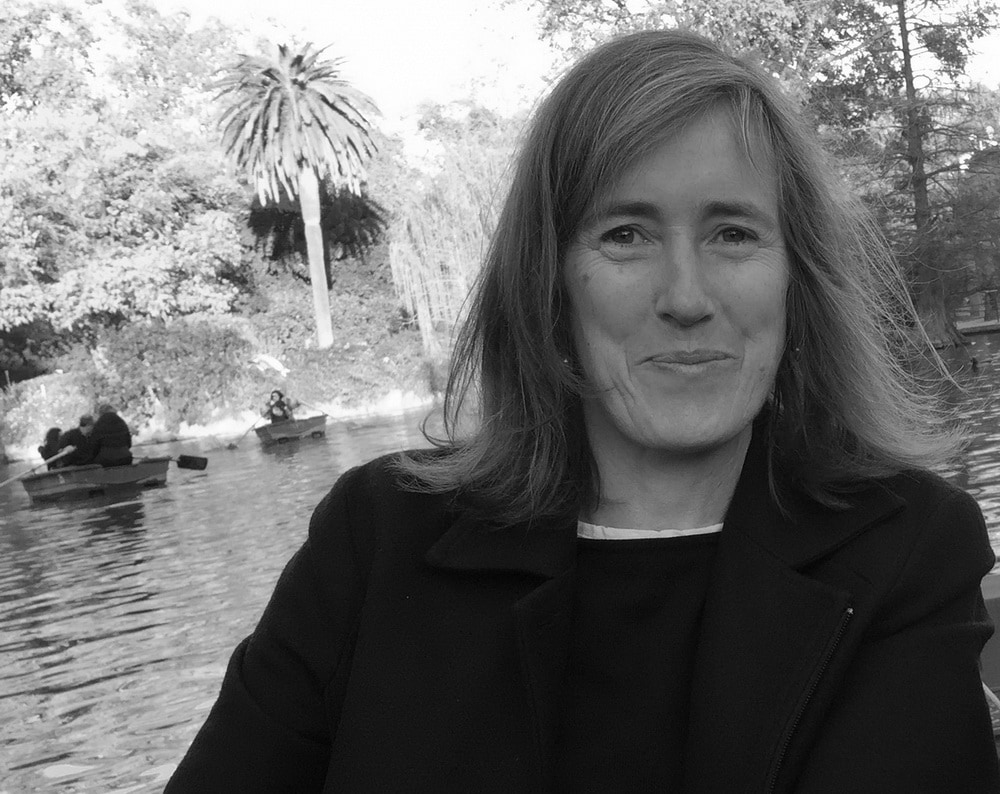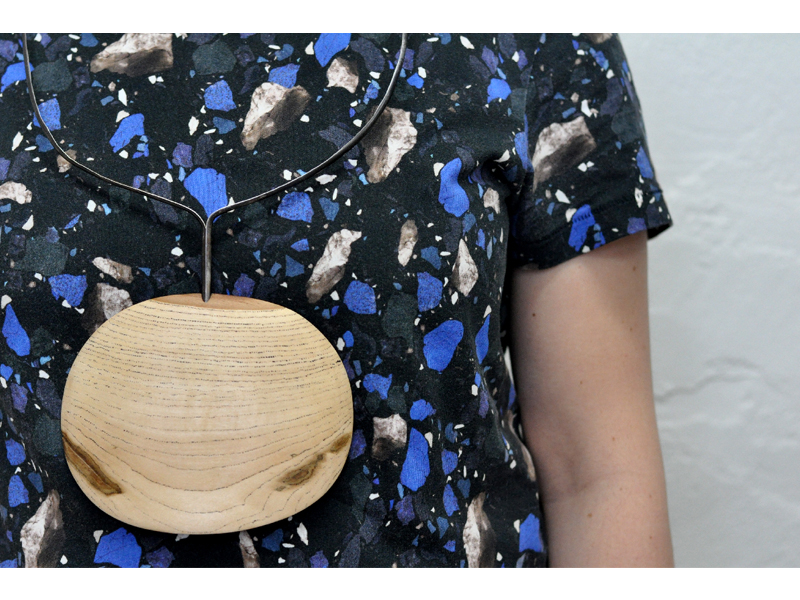
In Jasmin Matzakow’s body x necklace x intention = base unit, currently on show at Galerie Ra, words are equally as important as the work exhibited and foreground a tighter focus, in the artist’s recent output, on empowerment, boldness, and poetry. One of the salient aspects of Matzakow’s practice is her uninhibited interest in philosophy, a discipline she believes deals with similar issues as jewelry. In this long interview, she connects jewelry and philosophical texts to explore big-picture questions about life. Uniting jewelry with and to the wider world and to disciplines that sit outside its scope is where she sees and hopes contemporary jewelry is heading.
Vicki Mason: Your initial training was in Germany and your more recent post-graduate study was in Sweden. Can you articulate how, in your experience, the teaching differed between the two countries, and why you chose to undertake post-grad study in Sweden?
Jasmin Matzakow: The training at Burg Giebichenstein, Germany, was focused mostly on aesthetics and material exploration, while the training at Konstfack, Sweden, was mostly focused on content, context, and conscious material choice. The two departments are embedded in very different structures (diploma/master’s) and therefore have different dynamics. It was and still is fruitful for my work to include a variety of perspectives on making. The post-graduate studies at Konstfack have, among other things, opened up the idea of practice-based research for me.
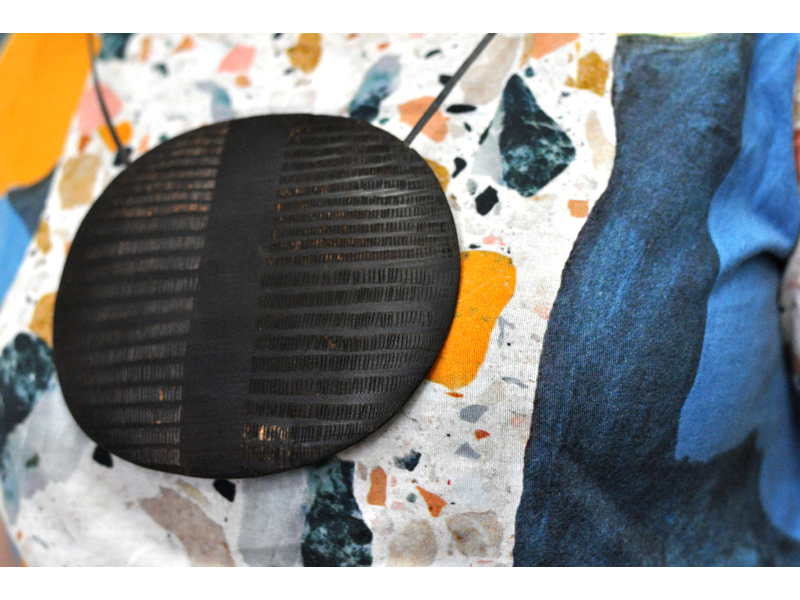
Your new exhibition, body x necklace x intention = base unit, brings together two bodies of work, Memories of Healing and Base Unit. There is a raw, elemental, rough-hewn feel to some of the Base Unit work while Memories of Healing has a tribal feel with its references to tattooing and scarification, etc. Do the two bodies of work relate to one another, and how did the newer forms come about?
Jasmin Matzakow: The two bodies of work are closely connected in that Base Unit builds on Memories of Healing.
Memories of Healing focuses on how jewelry can function as a reminder of healing. I was interested in transformation processes that humans seek in rituals like tattooing, and I researched how jewelry could initiate them.
The subsequent body of work, Base Unit, takes these transforming powers of jewelry as its starting point. They are no longer only a memory of an experienced healing in the past but they project their vibrant powers into the future.
In the newer work, I was looking for a bolder aesthetic expression. Speaking of empowerment is not a silent or delicate matter but a straightforward one. One should feel an impact when wearing the pieces.
Each Base Unit work has an individual title. Can you tell us your process for selecting these words and how the work is a translation of them? For example, it could be argued that the relationship between the word and work Base Unit: Creature is easily read, but in a work like Base Unit: Affect the connection between the two seems more intangible.
Jasmin Matzakow: Making jewelry, reading, and writing happen parallel to each other and without hierarchies. I experience it as one process with different expressions. The jewelry is not a translation of the texts, instead I use objects and texts to talk about the same matters from different positions.
When a connection of words and work is understood easily, it offers a clear entry into the work. When a connection is more intangible the challenge is bigger to trust and follow the poetry. I like that mix; it offers different levels in my work, and whatever one takes from it at different times is good.
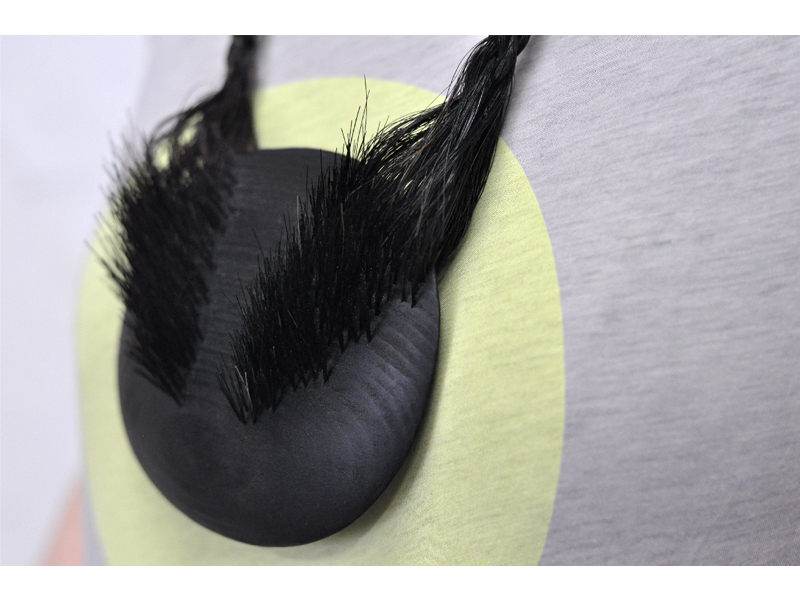
Your interest in connecting philosophy to art jewelry is documented in your recently published text, Conceptual Toolbox. What is it about these particular philosophers (Bataille and Guattari) that interests you?
Jasmin Matzakow: The Conceptual Toolbox was part of a PhD course (Architecture + Philosophy research seminar with Dr Hélène Frichot, Critical Studies in Architecture, KTH Stockholm) that I attended as a guest. I picked Bataille’s text on Potlatch, a native American gift economy, because it talks about how a society can interact with each other and objects. I am interested in the role that objects play in our lives, the hierarchies and power structures around them. Guattari’s The Three Ecologies interested me not only because of its politically charged content but also because of its reputation as being difficult to read. I am not a trained philosopher, I am a jewelry maker, and therefore my ways of engaging with a text are different and worth exploring.
In the text, you create bridges between given essays and your own practice, and raise a question that is relevant to a growing number of makers today: “How and why does one make a PhD in jewelry?” Can you tell us a little about the why?
Jasmin Matzakow: A PhD in jewelry or artistic research gives the opportunity to discover connections to other fields that it is not actively engaged with yet, and to challenge the jewelry field through them. It is an institutionalized structure that offers education and research possibilities on a very high academic level. I wish to be part of this movement because the art jewelry field has reached a point where it has disconnected itself from the world. In 2014 the online magazine Klimt02 published several articles about an identity crisis in jewelry. This debate sparked some important thoughts and then fizzled out because not enough people engage in this kind of discussion about the field. It is the task of institutions like universities and art foundations to stir up troubling discussions. It is harder as single makers each in their studio; trouble needs a group of people. I hope this crisis is tackled with a variety of methods, PhDs being one of them.
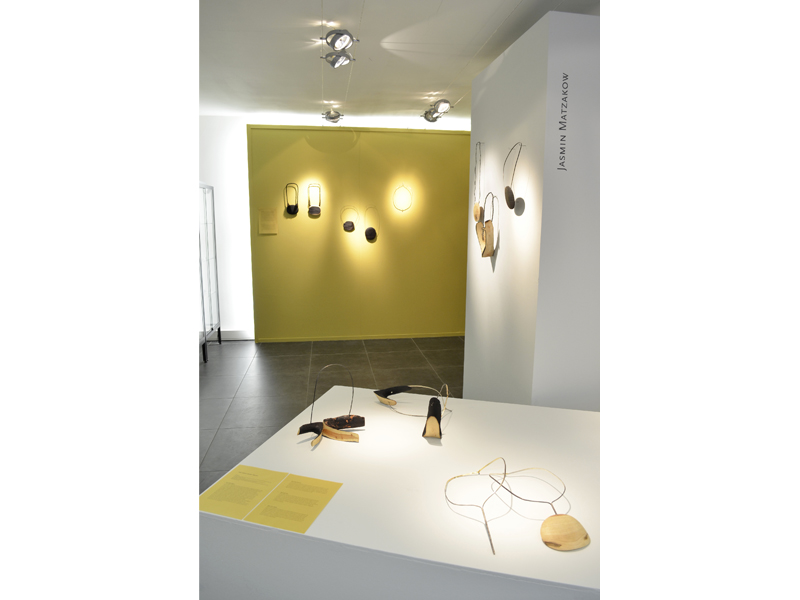
I agree that it is great to have debates, but is working in academia, at the PhD level, really a way to “reconnect to the world”? Doesn’t academization remove jewelers even further more from their primary audience?
While “the primary jewelry audience” is a part of “the world,” they don’t amount to the same thing. I hope to add previously unconnected parts of the world to the primary jewelry audience. I wish to grow and expand into new territories, while appreciating and defining further what exists and who we are.
Academia is one of the places a debate can be held freely because the people involved are not restricted, for example, by financial needs the way single makers often are. This freedom provides the grounds for innovation, and innovation can be initially unconnected from bigger parts of the world. These new ideas will evolve, and over time new connections will hold and old connections will be revived. I see this development not as a short-term fix but as a long-term investment.
Academia, like any other territory, comes with politics and power structures. That is part of human social structures, and so far academia has been a good place to debate that, too.
Where does your interest in philosophy originate?
Jasmin Matzakow: Philosophy “is the study of general and fundamental problems concerning matters such as existence, knowledge, values, reason, mind, and language.”[1]
Jewelry is a complex category of objects that is hard to fully understand. It deals with existential human needs, for example to decorate the body, for magical protection, to display one’s status, and to make objects for transit..
Jewelry and philosophy both deal with fundamental needs of humans: wondering what life is, and how to live it best. Philosophy puts into words what jewelry shows as an object. They look at similar human needs from different angles.
In an interview for Klimt02, you spoke about not wanting to make the same mistakes in your work and in the contemporary jewelry area you are active in that other fields have made, through including different discourse/theories from different disciplines. You said:
“I draw from many areas other than jewellery to inform and educate myself. I am very invested in reading Deleuze and Guattari’s A Thousand Plateaus together with a reading group. Other theories that I am currently educating myself about are actor-network theory, new materialism, ecological philosophy, feminist theories. In architecture it is common to include many different theories and fields into the discourse for many years now. I am wondering how I and the jewellery field I am active in, can learn from them in a way that includes not making the same mistakes?”[2]
Can you point out what you consider these mistakes to be and open up for us a little about your thoughts regarding what you have learned to date from your current research in this area?
Jasmin Matzakow: Architects who work with philosophy have created a vivid area with functional structures, e.g., in education and research, and are still met with resistance in the wider field of architecture. I could see structural issues that are present in most parts of our Western society, like gender inequality and hierarchies that go against norm-critical thinking.
Since I am working with texts in my jewelry practice, I am not only met with support but also confronted with hesitant comments from people within the jewelry field. Some people are afraid that art jewelry might become “too intellectual.” This assumes that philosophy (reading and writing) is intellectual and making processes are intuitive. I don’t believe this to be true. Philosophy can be very poetic and jewelry can be highly conceptual. Intuition and intellect are important tools but they don’t define or own a field. Discussing this matter with colleagues, we noticed that the fear of philosophy also comes from hierarchies that put words above making. Within this hierarchical thinking, to combine making with words threatens making without words. I prefer to question these hierarchies than not to use words in my practice.

What are your feelings regarding whether the viewer or wearer should or shouldn’t know about the rich textual/philosophical and theoretical thinking that underpins your work? Do you want them to know this information, or is a simpler reading of you work acceptable as well? What, as a matter of fact, do you expect from an exhibition?
Jasmin Matzakow: While I work in the studio, the jewelry exists together with the texts. In an exhibition and on my website I present them together. Anything from that point onward happens with less influence of mine. If someone enjoys the texts together with the jewelry, I am happy about that. If someone doesn’t want to enter one or the other, that is fine as well.
I expect from an exhibition to show the result of my process in a way that people feel welcome to enjoy the work. I also expect it to be open enough so that visitors can bring in their own experiences, feelings, and thoughts.
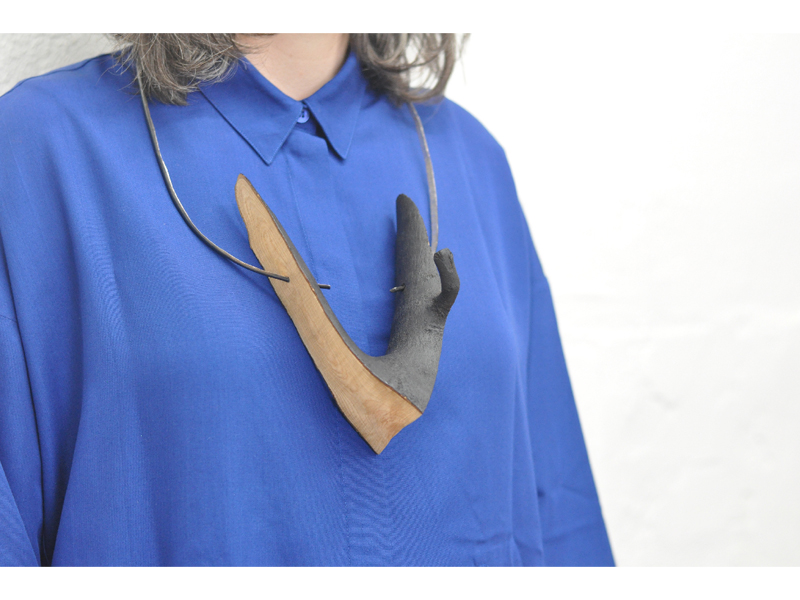
What does your working process look like? Do you start with a word or a philosophical theory, or do drawings come first? Do you go straight to your materials or do experiments and mock-ups?
Jasmin Matzakow: When I have an idea for a piece, I search for the right materials, and then start with the shape directly in the material best suited. I rarely make mock-ups because they tell only half the story. There is always the moment when I would have to say: “But it will look different in the real piece.” I prefer to work on the real piece right away. Sometimes I draw to visualize a shape and to remember it.
Usually, I sit with a group of pieces for two to four months until they get finished; the process is slow and intense. Sometimes I fight with a piece almost in the way I would fight with a person. These struggles often result in new developments in my work.
I am very engaged in a reading group and less formal discussions with colleagues. These have become important parts of my process. They nurture and challenge me in my work.
A reading method that I use is to rewrite in my own words texts I read. This slow and active approach to philosophical concepts helps me to understand the concepts better and creates a close connection between theory and practice. Bridging this gap has been the biggest challenge for me since I added philosophy to my practice. When I give account of a paradigm in my own words, I have taken the first step of finding my own expression for it, of breaking it down into its units and making it accessible for me. I see it a bit like a digestive system: I take in lots of stuff, trust that my body and mind can deal with it, and then give it a new expression.
Wood is a core material in these and other bodies of work, and you have likened it and trees to humans: bark equates to skin, the tree holds a human form.[3] Can you see yourself translating horticultural practices—like, for example, the grafting/splicing and genetic engineering that trees are subjected to—to your jewelry, perhaps as a metaphor for how the human body can similarly be manipulated?
Jasmin Matzakow: Rather than using the mentioned horticultural practices as a symbol for the manipulated human, I see myself using them as a representation for the manipulated environment humans create and live in. At some point this environment touches the human, which is where it gets interesting because it is not so easy to define. That point could be clothes, furniture, soap, as well as a necklace. The text on Base Unit: Evolution is going into this direction and is inspired by Donna Haraway’s cyborgs. I’m still new to her work so it will take some time until it finds expressions in my practice.
Taking as a hypothesis the fact that the materials you use are stand-ins for the human form, which you scorch, grind, splice, and pierce, would you describe this process (or the act of wearing) as a form of exorcism?
Jasmin Matzakow: Exorcism is a ritual performed to evict evil spirits from a person. With my jewelry I wish to attract good energy to a person. The focus lies on the opposite direction of movement and the opposite kind of energy.
When burning the wood, I transform it with the elements fire and water. I use the water to control the flame so that I’m not left with a heap of ash. I employ a spiritual system by using the basic elements fire, water, wood, and air. I don’t want to create symbols for burned humans, which is why I let the wood look like wood and don’t re-create human parts. I use the similarities between wood and humans to create symbols for personal development.
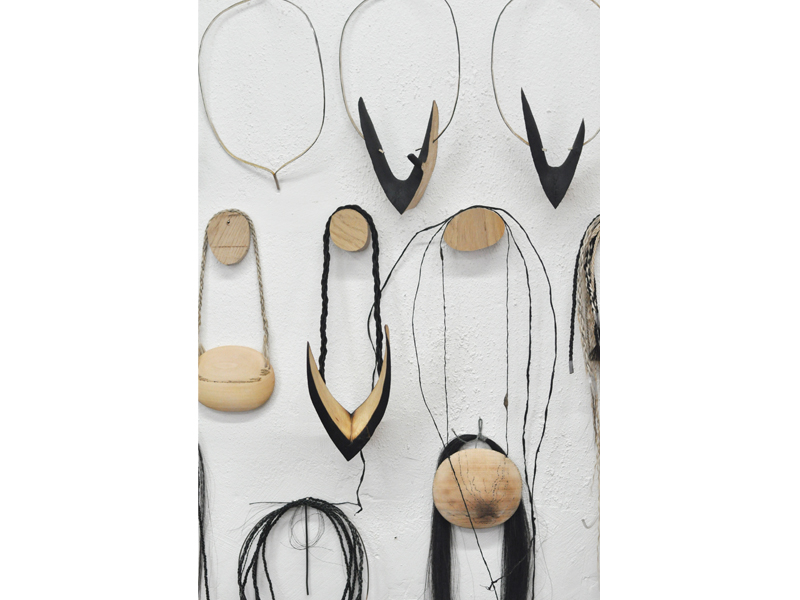
Why did you choose the necklace as the jewelry form for this series, as opposed to the brooch or ring, for example?
Jasmin Matzakow: For some years I made mostly brooches, and for the past three years I have made only necklaces. I like how they are connected to the body directly, and the technical challenge is all about how it sits on different bodies. For a brooch, one hardly has to consider the body, but for a necklace it is the most important part. In this thinking, a ring would be currently more interesting for me to work with than a brooch. I guess these are phases, and I want to take my time exploring different aspects of jewelry. I hopefully have many years to practice and develop. I’m not in a rush.
The latest two series are about human nature so it was important to me to engage the direct connection between jewelry and body.
Who wears your jewelry? Can you describe them?
Jasmin Matzakow: When making, I don’t have a certain type of person in my mind, but instead focus on values like empowerment, norm-criticality, and curiosity, and I think that the people who wear my jewelry can connect to some of these values. What I have observed is that they are often people I appreciate, whether I knew them before or we just met.
Where do you see the future of contemporary jewelry heading?
Jasmin Matzakow: I see it heading toward further exploration and definition of the connections jewelry has with the world. Whether it is artistic research/research-based practice, new materials, new techniques or artists traveling more, it is about connection and integration, while at the same time becoming more precise about the specifics of jewelry. I also hope for more engagement in troubling of current structures, but that is a general wish and not only for the jewelry field.
Thank you!
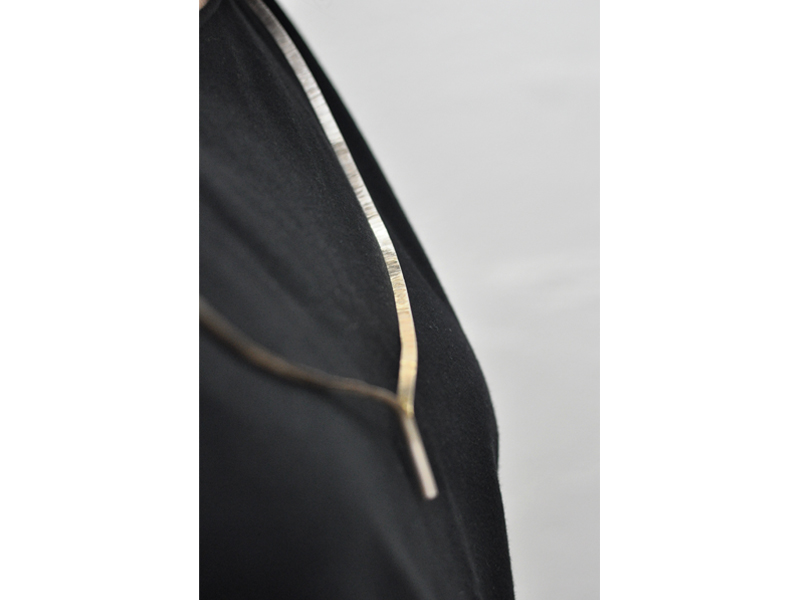
The work in this exhibition is priced between $1,000 and $2,800.
